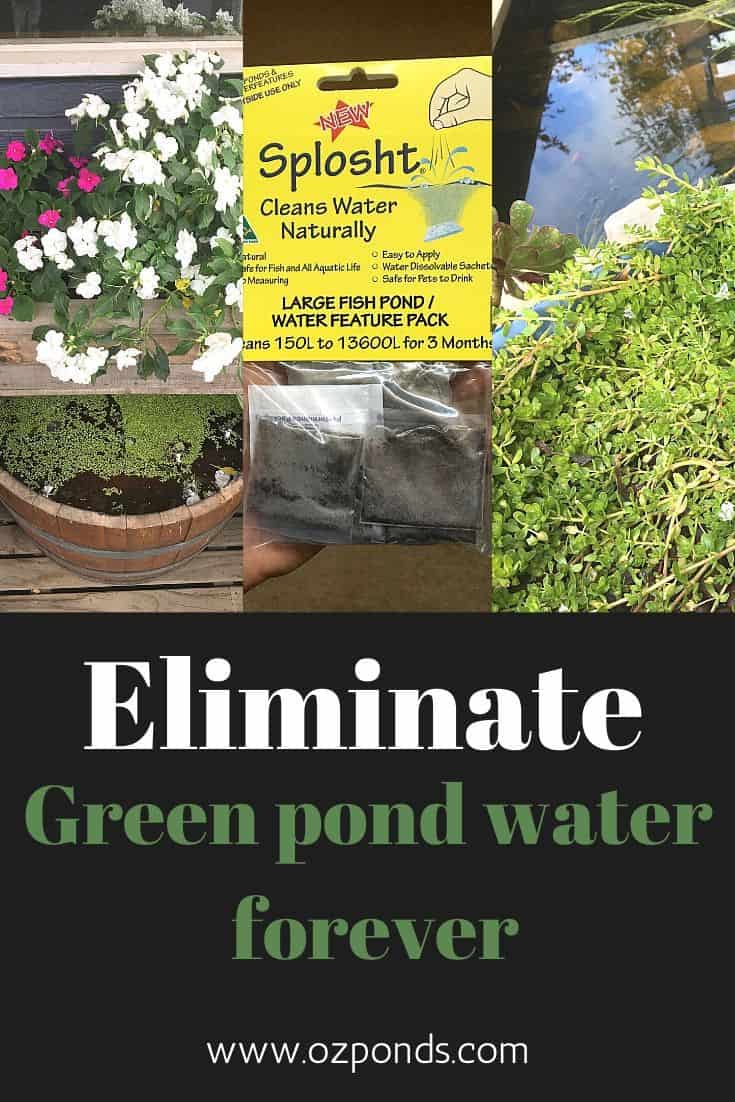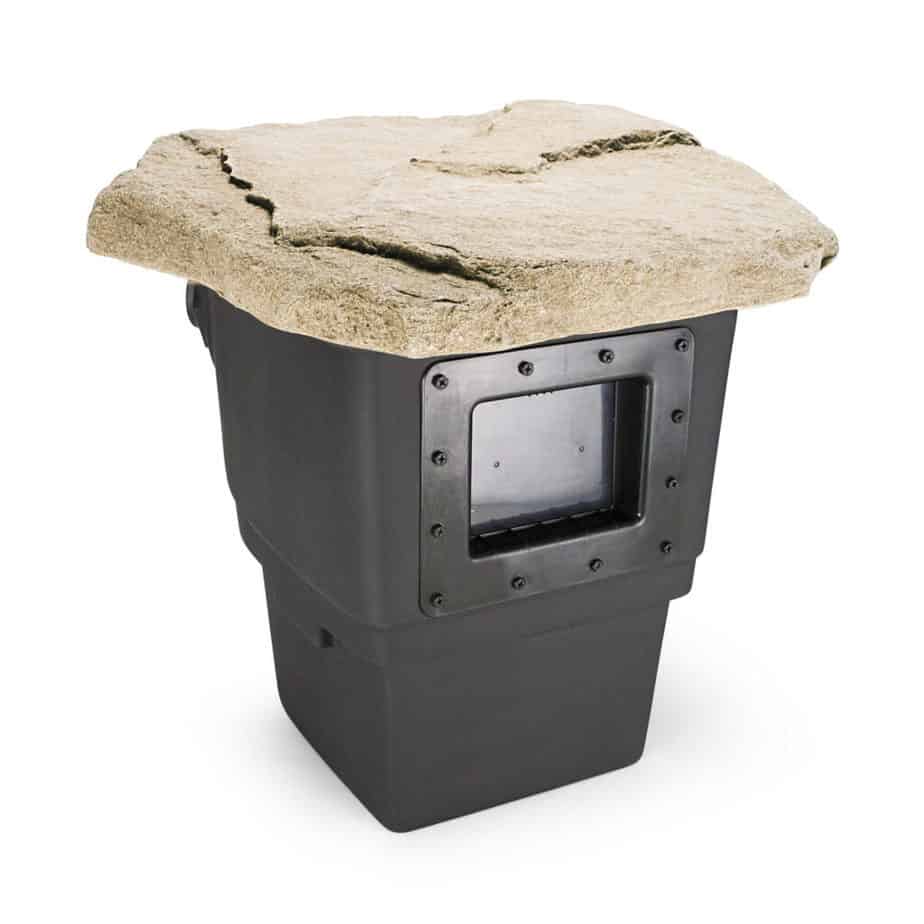Fixing a green pond is easy! Pond water goes green due to nutrient imbalances. The green is caused by floating algae.
The algae is feeding on the nutrients in the water. This is natural and will not be harmful to your fish. Although it doesn’t look very attractive.
There are some short term solutions we can use. These are effective but will only really mask the cause.
I’m far more inclined to look to long term solutions that will not only give crystal clear water, but also reduce overall pond maintenance.
What causes green pond water?
Green pond water is caused by singled celled algae. The algae is tiny and floats around within the water. This is what gives the water the green hue.
Algae is an opportunistic weed and appears to consume nutrients within the water.
Without the algae invading the pond to consume these nutrients they may build up, reaching unsafe levels for the inhabitants of the pond.
So the algae is actually providing you the pond owner a valuable service, without it appearing you might otherwise be unaware that there is an unbalance within the pond.
All ponds are reliant on a cycle called the nitrogen cycle. Its important to understand the cycle if you want to eliminate green water forever!
To learn more about the nitrogen cycle read my article ‘a quick guide to the nitrogen cycle‘.
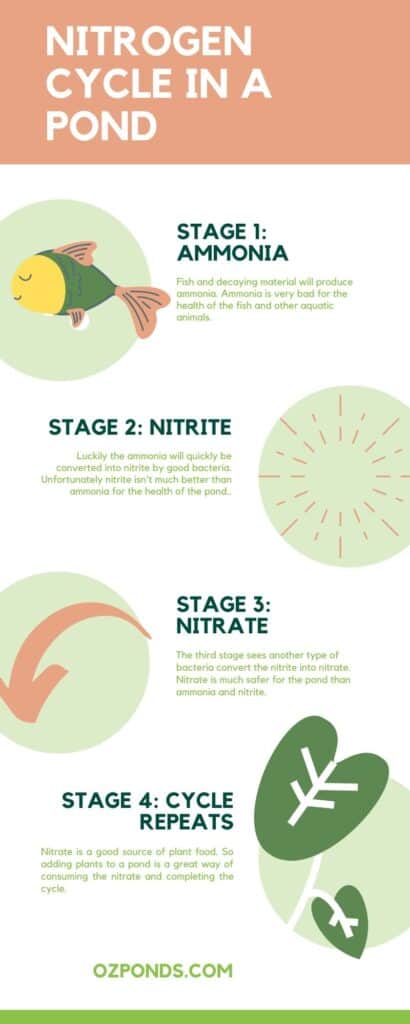
Basically anything that is added or falls into the pond will produce nutrients within the water.
The bacterias and micro-organisms that control the nitrogen cycle will consume the majority of these nutrients, provided that they are present in adequate numbers.
Providing homes for these bacteria and organisms is the best way to ultimately be rid of green water forever!
Eliminate green pond water once and for all
1. Bacteria
Bacteria, bacteria, bacteria. You cannot have enough good bacteria in your pond!
Bacteria and micro-organisms are the ultimate water purifiers. If you create the right environment for these incredible workers, you’ll have far less work to do!
Beneficial bacteria is the backbone of the nitrogen cycle. This is the natural process that keeps the pond water healthy. Without these bacteria the pond will quickly deteriorate into a smelly mess.
Every pond owner needs to understand and respect the nitrogen cycle! If you’re unsure what this is click the link to read a quick guide.
The beneficial bacteria need surfaces to grow on. The more surfaces we can provide the more bacteria we will have.
Rocks and plants are great natural surfaces that bacteria can colonise. Adding products like bio balls and ceramic noodles to your filter will also provide valuable surface area.
You can also buy beneficial bacteria in a bottle or packet, that can be added into the pond.
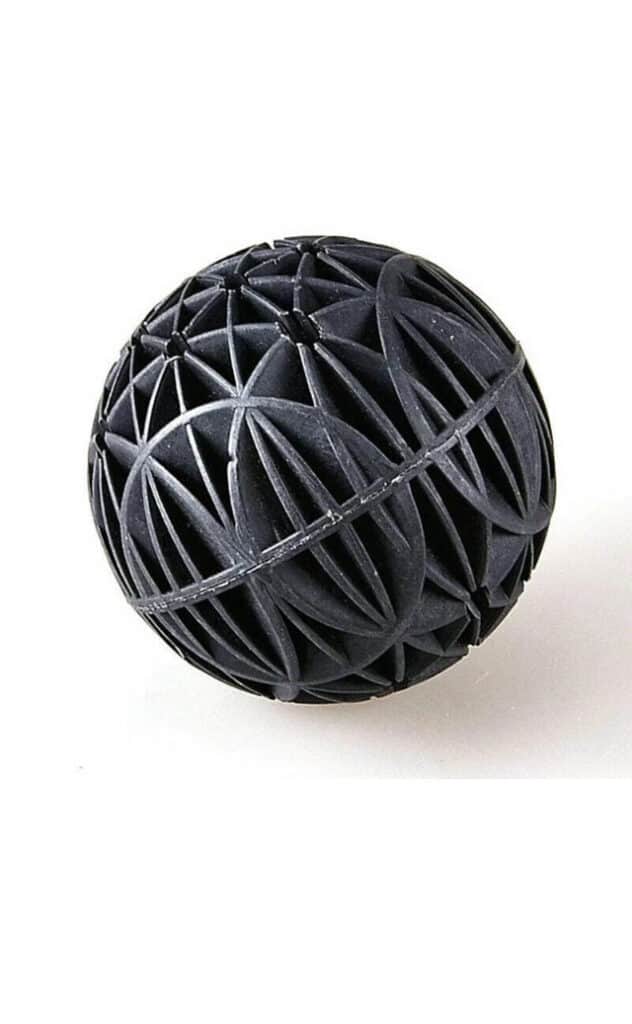
Bio balls 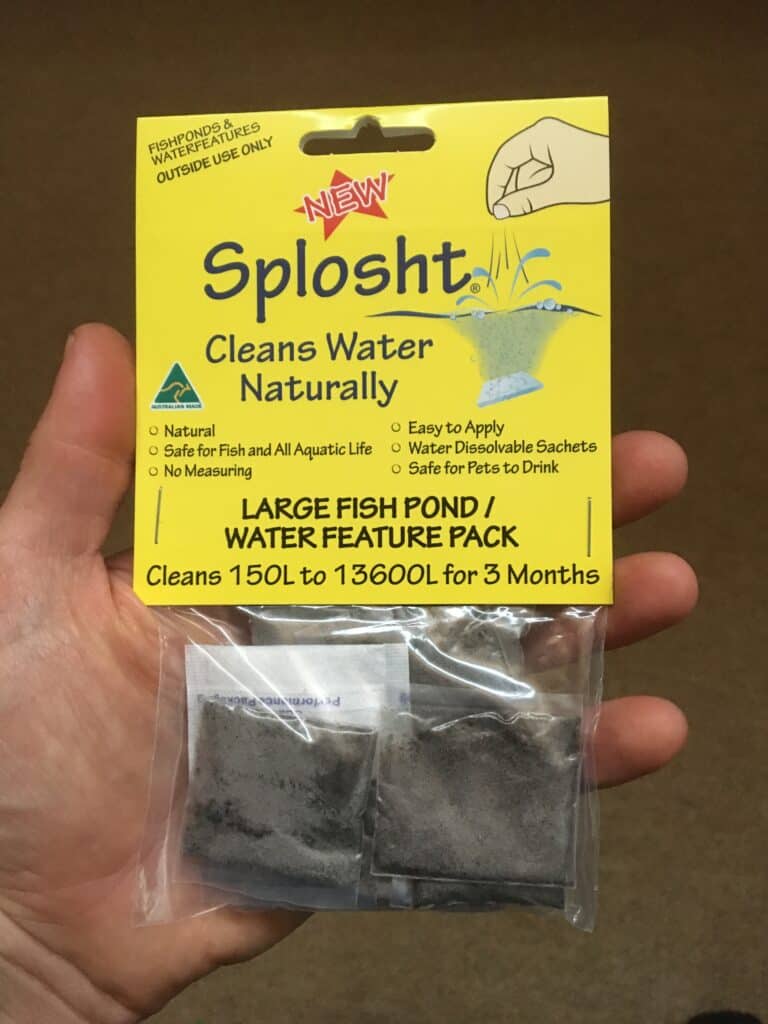
Beneficial bacteria 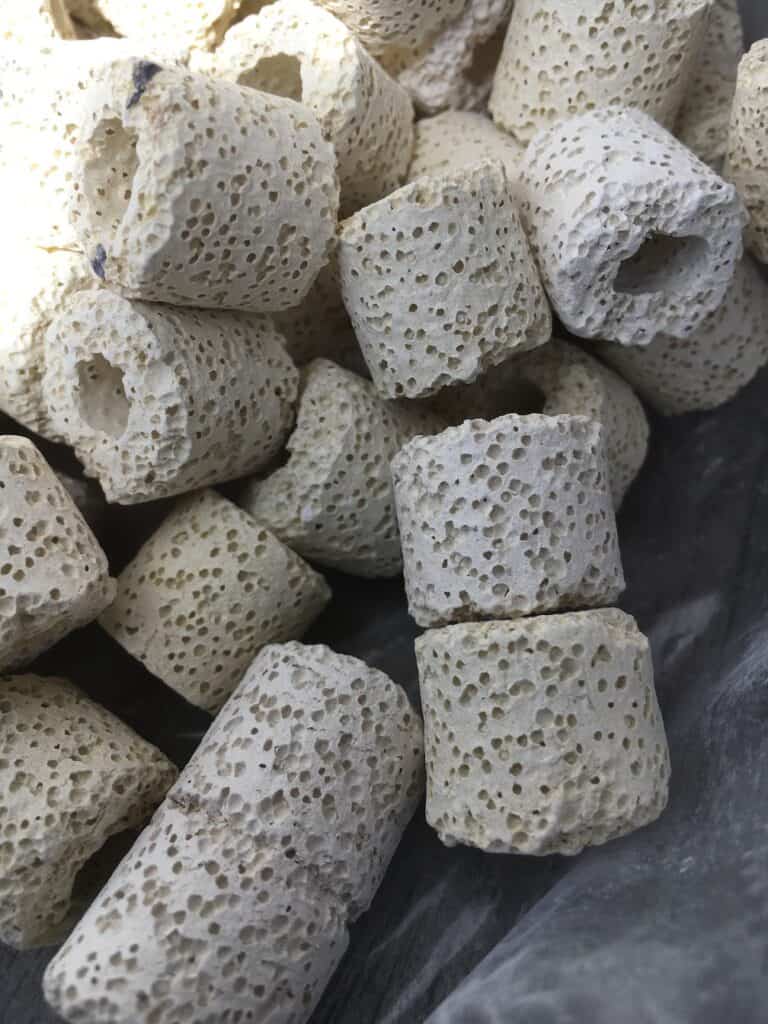
Ceramic noodles used in pot
The more water that you can pass over these areas with beneficial bacteria the better.
A well functioning nitrogen cycle and beneficial bacteria are hands down the number one priority of any pond owner! Not only will the water be healthy but crystal clear!
2. Plants
Plants will help eliminate green pond water by competing with the algae for nutrients.
Remember the reason the water is green is due to an excess amount of nutrients.
Having a pond with plenty of marginal and aquatic plants not only looks fantastic but it totally outcompetes the algae, essentially starving it.
Try and select plants that will be active for most of the year. Mix in some fast growing varieties that can act quickly to consume excess nutrients as they become available.
If at all possible incorporating plants within a natural filtration system such as a bog or wetland filter (which is my favourite) will pay massive dividends!
Bogs and wetland incorporate rocks and gravel (for bacteria to grow on), plants (to help remove nutrients) and a reduced water flow (which allows solid materials like fish waste to be removed from the pond).
Check out this video showing the results of what happened when i added a bog filter to my fish pond.
3. Mechanical filter
The bacteria within the pond are referred to as the “biological filter” this is because they are a filter made up of living organisms.
A mechanical filter is a filter that removes impurities via physical or mechanical means.
The best type of mechanical filter you could add to a pond in my opinion is a pond skimmer.
A pond skimmer works by “skimming” the water. The skimming action creates water tension which pulls floating debris into the skimmer.
Within the skimmer is a removable net. All the leaves, twigs, pollen, ect. that float on the surface of the water is deposited into the net.
What this does is it prevents all that material sinking to the bottom of the pond and decomposing.
This results in less nutrients being released into the pond.
A properly sized skimmer will generally only need emptying once a week. Very little maintenance!
4. Sensible fish numbers
Fish are ultimately responsible for most of the nutrients within the pond. An overstocked pond will almost always green water problems.
I wrote an article on some general guidelines on how many fish you can have in a pond.
I like to say:
“Less fish that you can see is far better than more fish you can’t!“
If you have too many fish find them some new homes. People are always building new ponds.
But please never release unwanted fish into local waterways!
5. Water temperature
Keeping a stable water temperature will also help reduce the amount of algae in a pond.
Algae thrives in warmer water.
Theres 2 ways we can help the pond maintain a cool stable temperature:
- Add shade. This can be accomplished by adding plants around the perimeter of the pond. But a quick and easy solution is adding water lilies.
- Good pond depth. Aim for at least 60cm (2ft). The deeper and larger the pond the more stable the water temperature will be.
Quick fix solutions
UV clarifier
UV clarifiers can be mistakenly referred to as filters, but they don’t actually filter the algae from the water.
They work by blasting the water with a high intensity UV light that splits the algae apart. This kills the algae.
The dead algae will still remain in the pond and as it decomposes it will release the nutrients it was storing back into the water. Thus the cycle goes round and round.
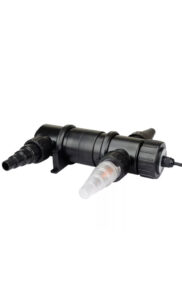
Provided the UV clarifier is constantly on you will not have green water. However the underlying cause of high nutrient water remains.
For a UV clarifier to be properly effective it must be used in conjunction with a proper mechanical and preferably biological filter.
Pond flocculants
These are quite interesting products that provide a very quick fix to suspended algae problems.
They are 100% fish and plant safe and will clear up a pond in just a few hours.
Flocculants work by using organic polymers (big words i know), but all this really means is that the trap the tiny algae particles into larger clumps.
The larger clumps will then sink to the bottom or be captured by the filter.
Flocculants are a good quick fix. Say if you were going to have people over and the pond looks green adding the flocculant can clear it up in a couple of hours.
Just remember this is still just a quick remedy!
The nutrients that caused the algae in the first place are still very much present and the problem will return.
A quick tip flocculent is also great at cleaning up a muddy or cloudy pond.
Algaecides
Algaecides work like a herbicide except they only target algae. Not all algaecides are made for ponds, so ensure you know what you’re buying.
An algaecide is incredibly effective at killing algae. It’s only really useful for string and floating algae. For tiny suspended algae a flocculant is a much more viable option.
Once the algae is dead make sure to remove it so the nutrients are not released back into the water. Those nutrients will just feed another wave of algae.
A pond enzyme can be added to eat any clumps that you cannot physically remove.
Remember algae is a plant and produces oxygen. When this oxygen is removed quickly from the pond it can be very problematic for fish, sometimes resulting in death!
If you have a heavy algae infestation and insist on using an algaecide treat the pond in sections! This should mitigate the oxygen loss to a more manageable amount. And always keep the pump running!
One other thing always follow the instructions to the letter! Using an algaecide is something that should be avoided if possible, in my opinion.
Barley straw / extract
Barley straw and barley straw extracts are not something I have ever personally used.
Barley straw works for algae control by releasing Hydrogen peroxide into the water as it decomposes. Hydrogen peroxide can be harmful to fish in high doses, so getting the correct ratios is very important.
As the straw breaks down it puts an added stress on the beneficial bacteria that forms the backbone of the biological filter.
For me barley straw is just a band aid solution with too much risk.
Green water in new ponds
If your pond is brand new and it’s green please just be patient. Almost all ponds will go through a green phase.
Like I said green water is caused by nutrient imbalances in a new pond this is normal as the bacteria that live in your pond haven’t had a chance to establish themselves.
Allow at least 12 months for the pond to truly find a good balance.
Adding as many of the long term options listed in this article, will prevent algae from being a problem in the future.
But in the short term just be patient before you waste money on unnecessary treatments!
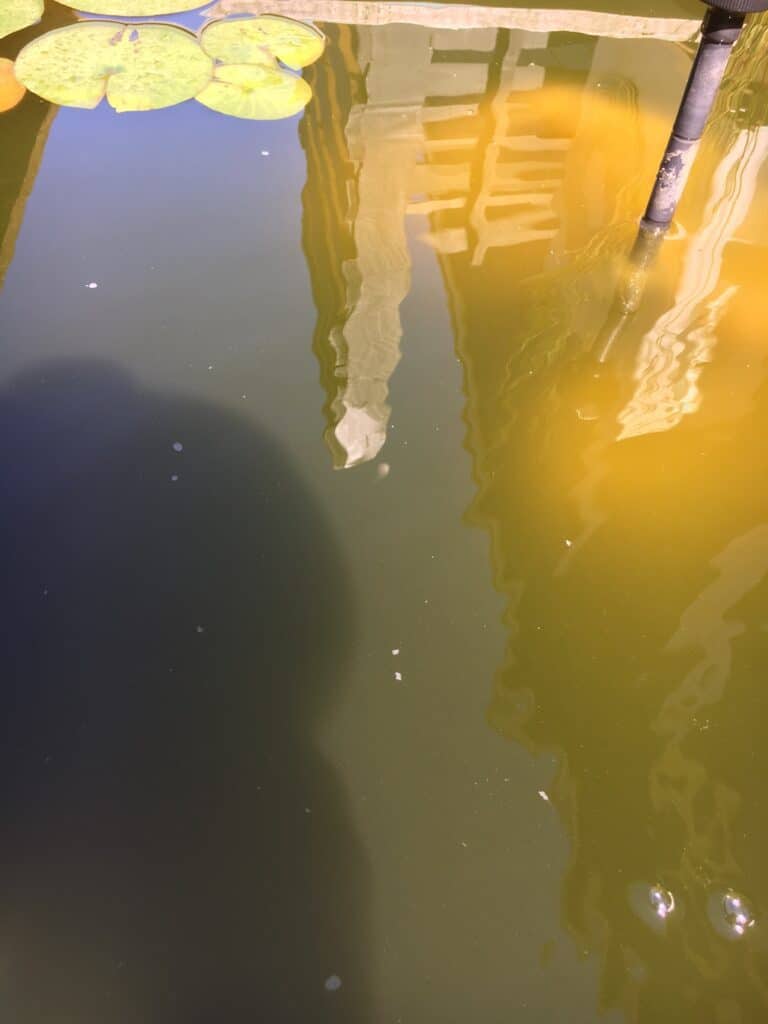
New pond syndrome 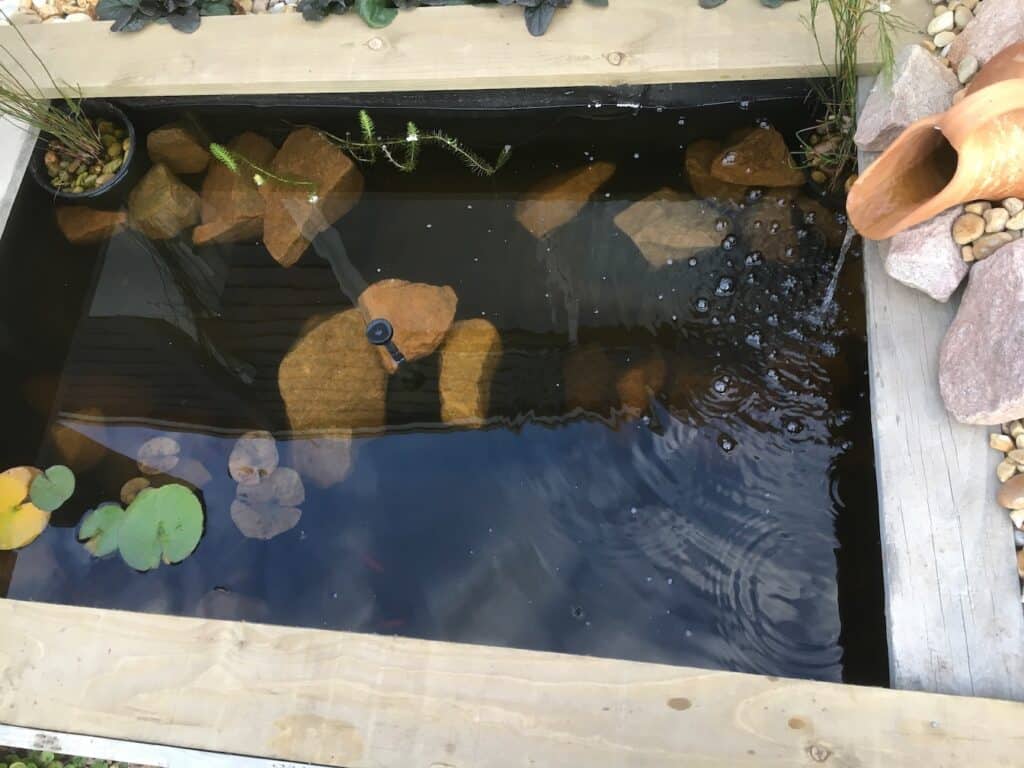
Same pond weeks later
Takeaways
For me the 3 best thing to eliminate green pond water is:
- Respect for the work that beneficial bacteria are capable of.
- Providing a great natural filter modelled on a bog or wetland.
- Keeping fish numbers lower.
When these 3 things are done I never have algae or green water problems!
Like I mentioned at the very beginning of this article almost every new pond will go green as it finds a balance. This is totally natural and normal.
But once the bacteria are established and they colonise the natural bog or wetland filter you’ll be enjoying crystal clear healthy water!
And the beauty is hardly any maintenance! Mother Nature does all the heavy lifting.
Subscribe
I often receive special offers and discounts from pond suppliers and distributors. These special offers i share with the readers.
If you would like to receive these special offers and discounts make sure you subscribe to the mailing list, so i can deliver them direct to your inbox.

